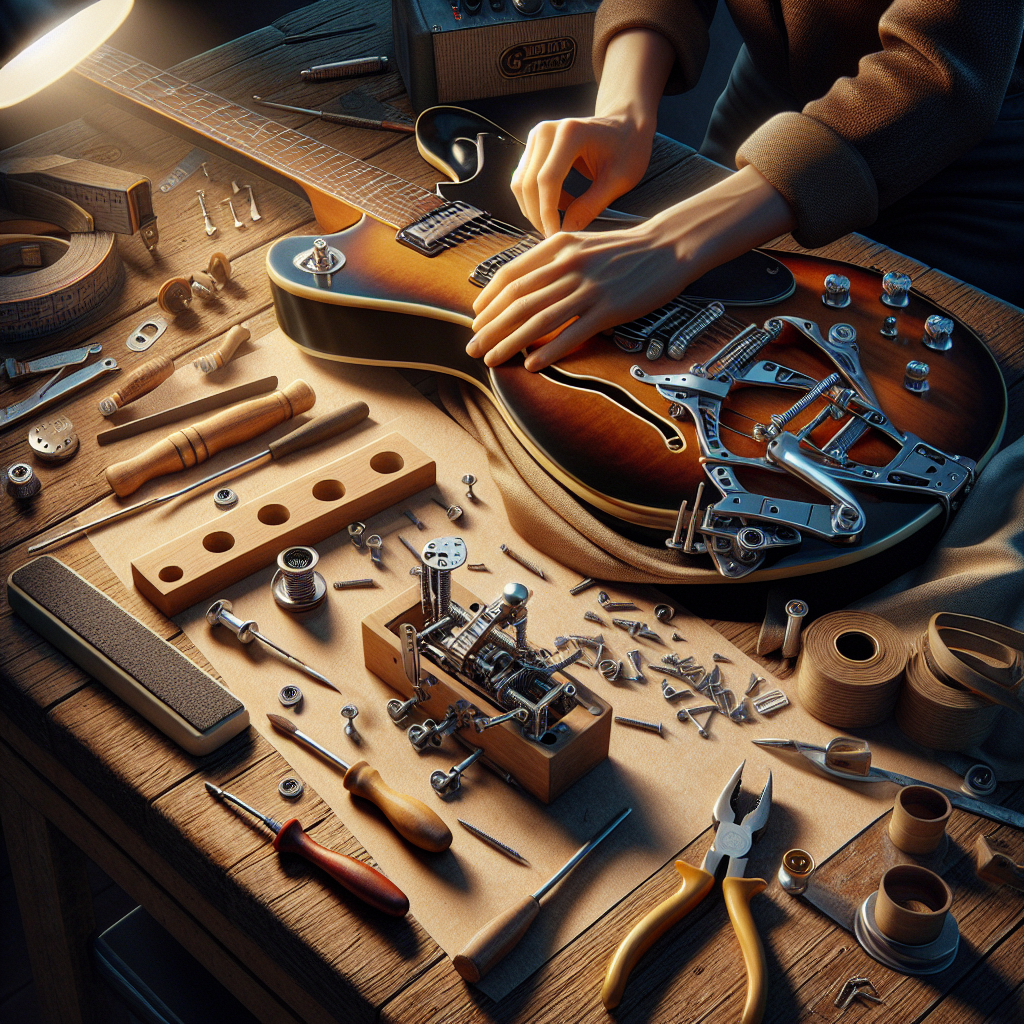
7 Easy Steps to Install a Bigsby Vibrato on Your Guitar: Enhance Your Playability
In the world of guitar modifications, there’s an iconic addition that many musicians swear by for achieving that classic vibrato sound—enter the Bigsby vibrato. Installing this legendary hardware on your guitar not only elevates its aesthetic appeal but also enhances its sonic capabilities, allowing you to introduce subtle pitch bends and shimmering chords that capture the essence of vintage tones. But how exactly do you go about installing a Bigsby vibrato on your guitar? Fear not, for in this guide, we’ll walk you through the step-by-step process, ensuring your guitar twangs and swoops with the best of them.
1. Gather Essential Tools and Parts
Before you dive into the installation process, you’ll need to gather some essential tools and parts to ensure a smooth installation:
- A Bigsby vibrato unit (e.g., Bigsby B5 or B7)
- Screwdriver set
- Drill and drill bits (for pilot holes)
- String winder for setup
- Masking tape to protect the guitar’s finish
- Ruler or measuring tape for precise alignment
Ensuring you have these tools on hand will make the process much more manageable and help you avoid any unnecessary delays.
2. Prepare Your Guitar
To start, you must prepare your guitar by safely removing the strings. This will give you clear access to the body without any obstructions. Additionally, using masking tape, cover the areas around the installation site to protect your guitar’s finish from any accidental scratches or drill slips that may occur during installation.
3. Mark the Drill Holes
With the area prepped, position the Bigsby unit on your guitar to find the ideal placement. Ensure that it’s centered along the body and that the strings will align appropriately with the bridge. Once you have positioned the Bigsby correctly, use a pencil to mark the locations where the screws will be drilled into the guitar.
4. Drill Pilot Holes
Accuracy is crucial in this step, so using a drill with the appropriate bit size, carefully create pilot holes at the marked locations. Pilot holes are essential as they guide your screws when attaching the Bigsby, reducing the risk of the wood splitting. Remember to drill carefully and to an appropriate depth without going through the body of the guitar.
5. Attach the Bigsby Vibrato
Carefully position the Bigsby unit over the pilot holes, ensuring all alignment decisions are honored. Begin securing the unit by screwing in all the screws evenly. Alternate between screws to gradually tighten the Bigsby, maintaining its alignment throughout the installation process.
6. Set Up the Bridge and Strings
Once the Bigsby is installed, it’s time to reattach the bridge, ensuring it’s appropriately aligned for vibrato use. Install the strings by threading them through the Bigsby’s string pins, wrapping them around the tuning pegs as usual. Adjust the tension and height of the bridge to match the new vibrato capability.
7. Tune and Fine-Tune
With the strings attached, tune your guitar to the desired pitch. Play chords and perform string bends to ensure the vibrato is working as intended, making any necessary adjustments to the bridge or string tension. It may take a little fine-tuning to get everything perfect, but patience will pay off with the grooves and tones you will be able to achieve.
FAQs
1. Can I install a Bigsby vibrato on any guitar?
While Bigsby vibratos are highly versatile, they are best suited for flat-top guitars like Les Pauls, SGs, and Telecasters. For acoustic or archtop guitars, modifications might be more complex or even unadvisable without professional help.
2. Will adding a Bigsby affect my guitar’s sound?
The Bigsby vibrato can slightly alter your guitar’s tonality, adding more sustain and a unique vibrato effect. Some purists argue it diversifies the sound by introducing classic effects without drastic alterations.
3. Is it necessary to change my guitar’s bridge with a Bigsby installation?
Not necessarily. However, bridges with roller saddles or a tune-o-matic bridge work best with a Bigsby, allowing for smoother string movement and reducing tuning issues.
4. Why is masking tape important during installation?
Masking tape protects the guitar finish from scratches and damage that might occur when marking drill points or performing any physical modifications during installation.
5. Can I still use a hardtail bridge with a Bigsby?
Bigsby works with hardtail bridges, but alterations to bridge type can offer better vibrato effects. A roller bridge or tune-o-matic complements a Bigsby installation effectively.
6. Do I need professional help to install a Bigsby vibrato?
If unsure or inexperienced with guitar modifications, consulting a professional luthier can ensure the installation is done correctly and preserves your guitar’s integrity.
Conclusion
Installing a Bigsby vibrato on your guitar can be an enriching project, opening up a new world of sound possibilities. By following these steps, you can successfully enhance your instrument’s playability and charm. Whether you’re striving for that retro vibe or just eager to experiment with new sonic landscapes, a Bigsby vibrato can transform your guitar into a new musical ally. For more insights into guitar modifications, remember to check reliable sources and guitar forums for diverse advice and tips. Happy strumming!
For more detailed information and other related guitar modifications, visit the Bigsby Installation Guide on Premier Guitar.